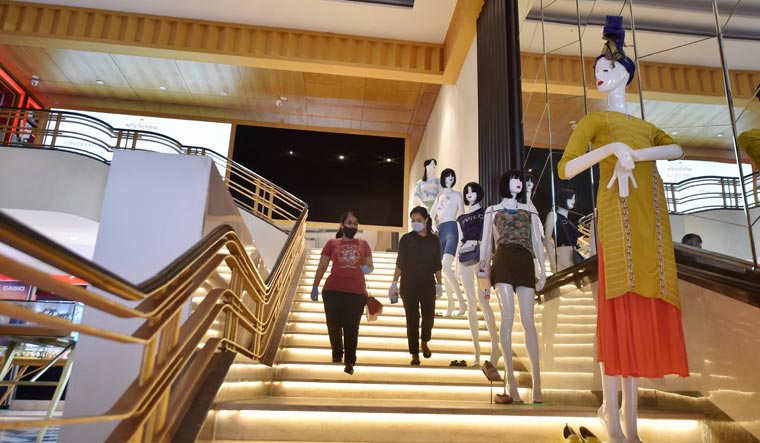
Manav Krishna was treading on very thin ice. He had decided to disregard the strict instructions of his wife, as well as the general paranoia over COVID-19, to go and check out stores in New Delhi’s glitzy central business district of Connaught Place a few weeks into the ‘Unlock’. An avid shopper and tracker of new trends in fashion and electronics, the corporate lawyer, desperately wanted a taste of how things used to be before COVID-19, the lockdown and work-from-home had forced him to coop up at home for months.
“It was unnerving in a way,” Krishna recounted after strolling down the colonial arches that constitute the British-era hub. “Not all stores were open, but there were hardly any customers at the ones that were open. Even the corridors were bereft of their usual hustle and bustle.”
While his disappointment was more in not getting his regular fix of eye candy and window shopping, it is a precariously dire situation when you view it through the lens of retailers. While e-commerce has been soaring to new highs and the neighbourhood grocers have held their own, the ones caught in the middle, branded stores, standalone, in a mall or part of a department store setup, called ‘modern trade’ in business speak, have been the worst affected. For retailers, ranging from fast-moving consumer goods (FMCGs), fashion, accessories, electronics and everything in between, the upheaval of these past few months have been mighty debilitating.
“Modern trade is not operating at a near normal level,” Dabur chief Mohit Burman admitted at its recent earnings call. “(While) general trade has recovered quite a bit, modern trade is far from recovery. Modern trade declined by 28 per cent and still we see modern trade is not recovering.”
Business leaders and experts across the board privately admit that with social distancing becoming the norm, fears of infection in visiting malls and big stores, as well as the pressure on family finances due to widespread job and pay cuts, customers are likely to think twice before making that outing to a retail store. And, if you really need to buy something, there is the convenience of online e-commerce companies, of course.
“New technologies are changing the landscape of the consumer goods market,” Hindustan Unilver chairman and managing director Sanjiv Mehta told shareholders in the company’s latest annual report, adding, “Consumer preferences are constantly changing…(HUL will be continue) to be agile and responsive to leverage market opportunities and navigate.”
While electronic goods have seen a sharp uptick via online shopping sites, it is not exactly good tidings for fashion and lifestyle. A study by the Retailers Association of India says these categories have declined by 69 per cent compared to last year.
Adding to the woes of this once-crucial mode of brand visibility and marketing has been the fact that many branded stores and department stores are present in malls, which were kept shut by national and state administrations for long. Even after opening, their multiple layers of sanitising and security—some establishments do not permit entry to those not having Aarogya Setu installed in their phone, for instance—some feel, has been forcing customers to refrain from making that outing.